What Are the 3 Milankovitch Cycles?
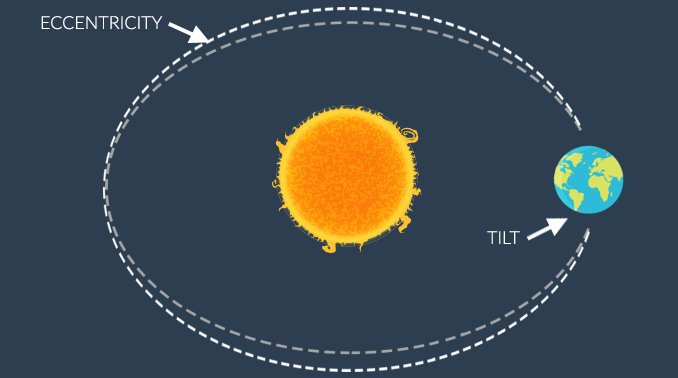
The Milankovitch Cycles
In the eyes of Milutin Milankovitch, there’s been a noticeable trend in climate, temperature, and seasons due to this cycle. And we can accredit these long-term climate changes to 3 variations in geometry between the Earth and the sun:
- ECCENTRICITY: How the Earth orbits the sun.
- OBLIQUITY: What angle does Earth face the sun?
- PRECESSION: How Earth’s axis of rotation changes.
If you put these 3 interactions of Earth and the sun together, they form the Milankovitch Cycle. Let’s explore this in more detail.
1. Orbital eccentricity
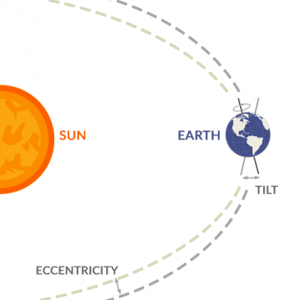
Earth revolves around the sun in a roughly circular orbit. But roughly every 100,000 years, its orbit becomes more eccentric.
So it starts as a circular orbit like it is in its current state. But like a pendulum, the eccentricity will swing it back the other way with a more elliptical orbit.
Because Venus is so close to Earth, its gravitational interactions slightly pull Earth in its orbit. Then, colossal Jupiter pulls Earth slightly outside its orbit at the opposite end.
So Earth periodically goes from a circular orbit to a more elliptical one (high eccentricity). This is due to the gravitational pull of neighboring planets. Because of its orbital eccentricity, Earth varies in distance from the sun. As a result, it receives less solar radiation causing it to cool.
2. Obliquity variation
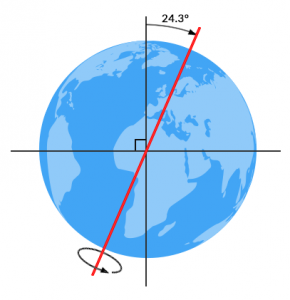
The next piece of the puzzle is obliquity. Right now, Earth’s obliquity is 23.5°. But during the Milankovitch Cycle, it varies from 22.1° to 24.5° and takes 40,000 years to complete a full cycle.
Earth’s changing obliquity doesn’t alter the total amount of incoming solar radiation. Instead, it affects the geographic distribution of where sunlight hits the Earth.
AXIAL TILT: For example, if axial tilt increases, winters are colder in both hemispheres. And vice versa for when axial tilt decreases.
In summary, more tilt signifies more severe seasons. For instance, this can cause long periods of glaciation. And for Earth as a system, it enters positive and negative climate feedback loops.
The effects are drastic for long-term climate change. And this is all because of Earth’s change in an axial tilt that gradually shifts every 40,000 years.
3. Axial precession
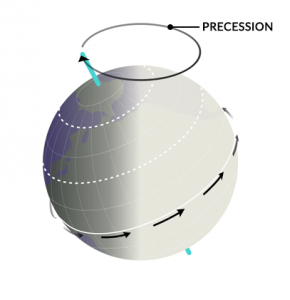
Axial precession is the movement of the rotational axis of Earth. According to the Milankovitch Cycle, precession has a cycle of roughly 23,000.
Precession occurs because the Earth is not a perfect sphere. It flattens out at the poles and widens at the equator. In addition, the gravitational pull from the sun and moon causes precession.
Similar to obliquity, precession doesn’t change the total amount of solar radiation that hits Earth. But precession primarily alters the perihelion and aphelion.
“Axial precession is the movement of the rotational axis of Earth. Overall, this increases the seasonal differences from one hemisphere to the other.”
What Are the 3 Milankovitch Cycles?
The Milankovitch cycles are a set of predictable, periodic changes in Earth’s orbit and axial tilt that influence the planet’s climate over long periods of time.
These cycles are thought to be responsible for variations in Earth’s climate, including ice ages and interglacial periods, as they affect the distribution of solar radiation received by the Earth’s surface.
Do you have any questions about the Milankovitch cycles? Please drop us a comment below and we’ll try to get back to you.

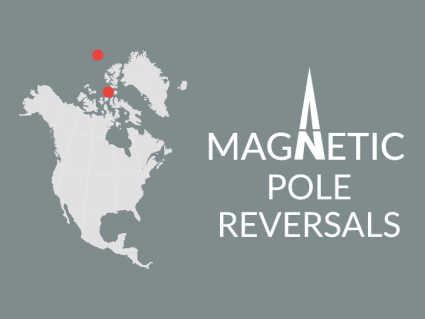
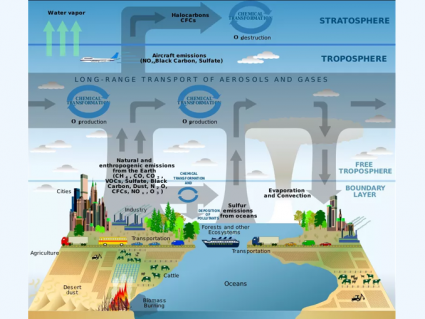
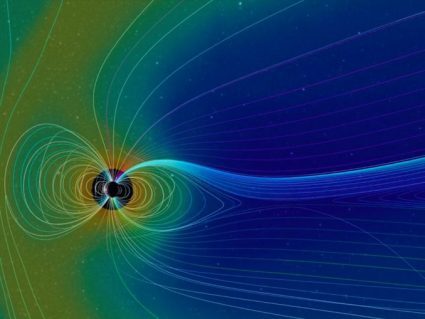

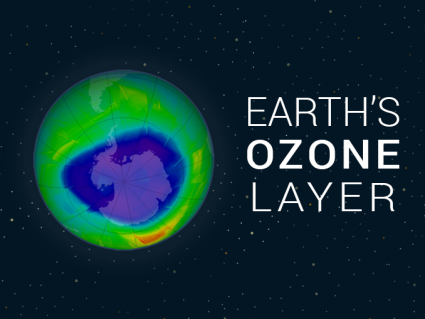
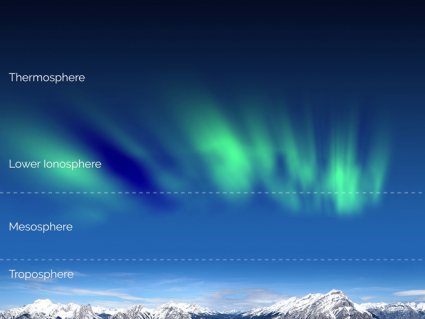

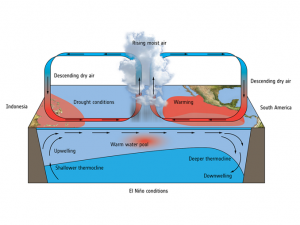
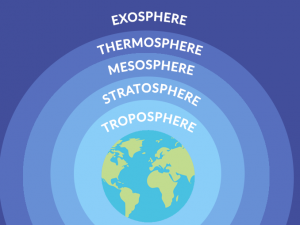

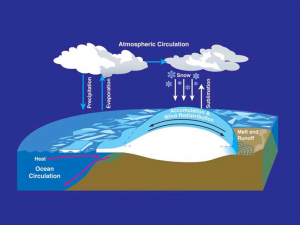

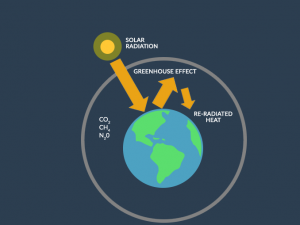
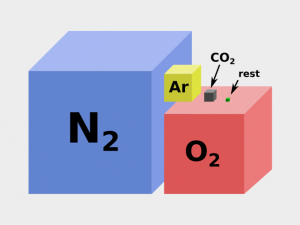
the “recent” cycle of ice ages was preceded by hundreds of millions of years without ice ages. I accept that we are currently in a cycle of glaciation and thawing, but no explanation has been offered for why the cycles started. I have heard theories that South America connected to Antarctica and this land bridge disrupted the Antarctic current from circumnavigating and cooling the continent. I have also heard that the Arctic Ocean was more open to warmer waters from Pacific and Atlantic Oceans.
But this is speculation unless we can do climate modeling based on changing land masses.
common sense climate causation list:
Sun: 98%, Milankovitch Cycles: 1%, Moon: 0.25%, Magnetic Field: 0.25%, Volcanoes: 0.2%, Ocean Currents: 0.2%, Man: 0.1%
Is the obliquity range of 22.1-24.5…..mostly due to axial precession, or axial wobble?
Using the analogy of an analog clock with 3 hands, in the Year 2024 A.D., where are we on each of the 3 cycles? Shouldn’t NASA have a webpage with that info? I can’t find it.
As a current student at an Ivy League university studying this exact subject, I can say with great certainty that the climate change deniers are incorrect. Although these sunspots and orbital cycles do have a minuscule effect on the climate, their extensive timescales (>10,000 yr cycles) cannot explain the rapid rise in temperature that we have seen in the last century. EarthHow is at direct fault for omitting this necessary piece of information from the article.
I did have appreciated this work emencally and had always known of its existence for some time.
The second most important aspect that may have a impact is sysmic activity and geological plate tectonics.
the constant flux and movement of these plates has a dramatic effect of geological features through out Time.
And then the super volcano eruptions that drastically changed environment and atmospheric content.
if it’s possible to calibrate the knowledge gained from geological and seismic activity, with the occasional meteor impacts , we would start to understand a lot more too Al Gore.
The Milankovitch Cycle is not the only thing never discussed concer man made climate change.
Volcanic activity releases tons of green house gasses. Volcanic activity on ocean floor adds heat as well.
Sun spots and the variations in solar activity are not included in climate models which are used to predict warming.
Temperature monitoring stations have been disproportionately removed from rural areas to urban areas.
To name a few.
It blows my mind to see the Anthropomorphic Climate Change True Believers here dismissing those that even consider that variations in the earth’s exposure to Solar radiation can be a significant contributor to climate variations as “climate deniers”. Then go on to describe how we won’t accept the “science”, (its all done you know, all figured out, ask NASA). They do this of course while the deny the science of how much solar radiation the earth receives and at what angles and sorts of exposures it gets, and all while totally forgetting that they are constantly trying to sell us on getting solar panels because the sun is so powerful. Funny people, unless you mind them getting in the way of fighting poverty and making life better on earth for humans. Then it’s just sad.
Excellent discussion and will be perfect for my children to understand more about Earth. I can see how these cycles can affect our climate and how little data we actually have to be concerned about global warming. If true, I would prefer global warming and an increase in CO2 as that means a more prosperous planet in terms of nature, abundance, and diversity. Too many alarmists in today’s world! Humans cannot restrain their vainness and arrogance about how important they are, and most literally live in fear from the doomers. Just enjoy life….the earth can and will take care of itself!
Funny to see people still denying any human impact on global warming. It’s like time traveling to about the 5th century except you don’t need to speak or read Latin or Gothic.
Some interesting facts to ponder for those who believe that manmade CO2 emissions override Milankovitch cycles.
1 – Today there is ice in the Arctic. 10,000 years ago – a long time before Man began burning fossil fuels in huge quantities – there was no ice in the Arctic.
2 – In the last 550,000 years the Earth has had ice at both poles for just 9% of that time.
3 – For the last few thousand years the average temperature of the Earth has been, and remains, about 14ºC. But the Earth is 4.5 BILLION years old. And its overall average temperature is 19ºc.
Every piece of scientific evidence is misinterpreted by climate deniers – often deliberately but also sometimes because of a lack of education – this is simply because they have no intention of accepting the notion that man is causing the increase in the annual average global temperature (in the lower atmosphere) compared to the pre-industrial age (approx 1850 to 1900). They simply won’t accept that the release of infra-red radiation blocking green-house gases (carbon dioxide & methane) can produce the increasing rise in the annual average global temperature.
For the deniers who actually accept that global warming is occurring, many still don’t, the Milankovitch Model seems to be an ideal alternative to the above process involving the release of green house gases, until they find that the model inconveniently predicts that we currently should be going through a cooling era – which the many years of data since around 1850 shows is not the case, in fact the annual average global temperature has been increasing year on year.
Most deniers will not be convinced by any scientific data, or scientific argument, this is shown by the amount of disinformation and misinformation they put out and the way they strive to, incorrectly, twist the scientific data and attack the scientists involved.
Thankfully, hardcore deniers are a relatively small cohort and more open minds have been convinced by all the data collected and the science that explains it.
Other things not discussed are a future ice age coming because of this, and the small ice age that ended in the 1800’s, but more important is why the milankavitch cycle is never discussed publicly.
The idea that humans can be a cause of microclimate change is absurd as any scrutiny of the geological and paleontological record indicates.
The Milankovich cycle is a powerful explanation of macro climate change.
Great article. These are so difficult to find. Alas, I must still continue my search for geographic effects. Like the last number of years of North Africa turning to a desert (even though 500 year old maps show rivers) …must have been caused by CO2. This is getting me closer, thank you
Yes, Milankovitch cycles exist and yes, so does human-induced climate change.
The Earth is a giant rock orbiting the Sun moving through space, its orbit, tilt, and precession vary over time which alters Earth’s climate.
At the same time, humans are releasing greenhouse gases faster than the Earth can mitigate which is leading to a warming of the planet due to the inability of the Sun’s radiation to escape Earth’s atmosphere which is trapped under a blanket of excess gases.
These two proven situations aren’t mutually exclusive.
Thanks, Avon for sharing!
To those who wonder how human’s actions can seriously affect climate change in the light of what we read in this article, take a look at the chart at the top of this page.
https://climate.nasa.gov/evidence/
Climate change is all about the release of and conversion of the type of energy that is on earth.
We have increased the frequencies by radio technologies like ice melts in a microwave oven. The equilibrium between energy storage forms, man has altered. Sun energy stored up in plants, light energy captured will and has always stored up energy released by the sun.
It’s simple to cure the heating up… get every person to plant one fast-growing fruit tree per month. This way we can plant a few billion trees per month. These are the alveoli of earth storing energy in non-radiation form. Reduce the amount and intensity of microwaves in the atmosphere.
It is a fact the earth has a small portion of dark not even counting Dusk and Dawn. They cover very large geographic surface regions The light does bend around the earth
Why is the Milankovitch Cycle never ever discussed when talking about climate change? Human factors may or may not alter our climate but what has the biggest effect is the Milankovitch Cycle a process that human intervention can do nothing about.
So this proves to me that the argument about man made climate change is nothing more then BS.
Is it possible that our Sun is closer to Earth then anticipated. The reason being no Sunlight at the poles for months at a time.
The other reason could be the slight bending of light at the poles due to refraction. Also, if our Sun is so far away (and so huge and the Earth being so small), the sunlight should cover the whole Earth and be warmer at the equator and slightly colder the poles.